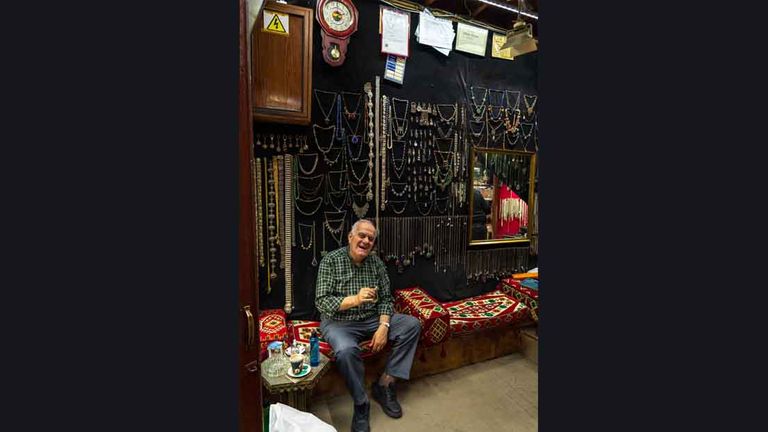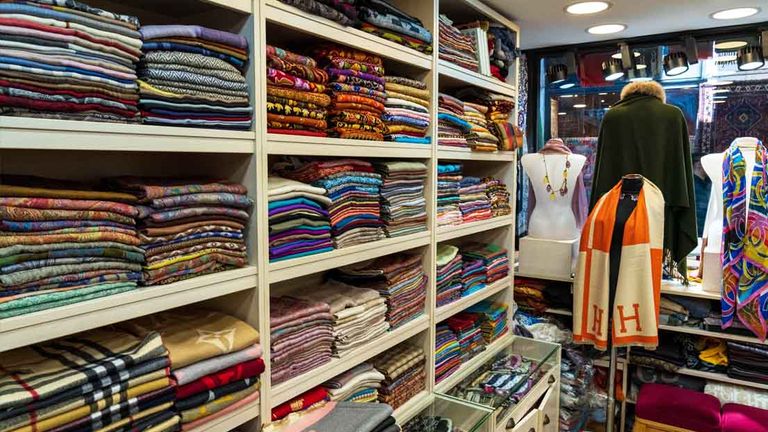Editor’s Note: On February 6, 2023, a 7.8 magnitude earthquake hit southeast Turkey (officially, the Republic of Türkiye) and northwest Syria, followed by strong aftershocks. The death toll has risen to at least 50,000 across the region at the time of publishing this article. Turkey has reported popular destinations outside of the earthquake zone, including Istanbul, were not affected and are welcoming tourists.
If interested in donating to help, these organizations are a few of those assisting in the earthquake recovery efforts: Doctors Without Borders,Oxfam,The International Red Cross and Red Crescent Movement
Located within Istanbul — one of the world’s most dynamic cities — is Kapali Carsi, or Grand Bazaar. Built around 1461 by Fatih Sultan Mehmet to help build the economy and support the nearby Hagia Sophia Grand Mosque (another must-see in the city), the Grand Bazaar is one of the world’s oldest and largest covered markets. Today, it covers some 330,000 square feet and houses more than 4,000 merchants, along with a few restaurants, cafes and inns — even a post office.
While it may seem like a rambling and confusing rabbit warren of passageways, the market is actually built on a grid system of walkways, each given a “street” name to help navigate and find specific stores. Sections of the market are dedicated to particular types of wares, such as gold jewelry, antiques, kitchen items, traditional pottery, textiles, leather and more.
Here’s our guide to everything clients need to know to navigate this wondrous city within a city.
Know Before You Go: Opening and Closing Times
First: a quick briefing. Wandering through the Grand Bazaar is much more than shopping; it’s a cultural experience. Even travelers who aren’t big shoppers will appreciate the people-watching opportunities and the chance to explore alleys built during the Ottoman Empire. The building’s history alone makes it worth a visit (but, realistically, people do come to shop).
 The bazaar closes at 7 p.m.
The bazaar closes at 7 p.m.
Credit: 2023 Bohdan Melnyk/stock.adobe.comThe bazaar is open Monday through Saturday from 9 a.m. until 7 p.m., though merchants typically begin closing for the day around 6:30 p.m. The market is closed on Sundays and certain public and religious holidays. Most shops accept credit cards, but cash is preferred and will often result in a better price.
There are 21 entry gates, but the main entrance is Beyazit gate, across from the Beyazit tram station. The official map can help visitors navigate the Grand Bazaar, but it’s mostly helpful for providing the direction of a particular section and which entry gate is closest.
Lastly, comfortable shoes are highly recommended, as the Grand Bazaar is, well, grand — making it difficult to see it all, even if clients spend the entire day browsing.
The Experience
While the streets of Istanbul can be crowded, noisy and a bit frenetic, stepping into the Grand Bazaar is a strange juxtaposition of ancient and modern. Security guards keep watch over metal detectors installed in the more than 500-year-old market gates. Once visitors are inside, the pace slows. Winter months are less crowded, but even during the summer rush, people stroll leisurely, stop to talk to merchants and enjoy the hand-painted arched ceiling and windows. It’s worth taking a few moments to marvel at the ceilings, particularly when moving from section to section.
Stores are small, with little to no space for additional inventory, though rumor has it that some vendors have, over the years, dug out parts of their basement to create storage. (This is unconfirmed, and likely not officially allowed).
Istanbul is a crossroads of many cultures and languages, and English isn’t always spoken. Vendors often use a calculator to show the price of an item in Turkish Lira, then use the day’s exchange rate to show how much it would be in the visitor’s currency. Recommend clients know their own exchange rate and do their own calculation, as well. Of course, a smile and a few words of Turkish — particularly “tesekkurler,” which means “thank you” — may help push past language barriers.
 Shoppers are offered Black Turkish tea.
Shoppers are offered Black Turkish tea.
Credit: 2023 Josephine ParrBlack Turkish tea, or cay (pronounced like “chai”), is an important part of the shopping experience in the Grand Bazaar. In almost any store a traveler enters and begins browsing, they’ll be offered cay — and there’s no expectation to pay for the tea or even buy anything. It’s the Turkish way of welcoming visitors, offering a bit of hospitality and building a relationship. If clients aren’t tea drinkers, they might be offered elma cayi, or apple tea, which is a little like hot apple juice.
While the tea is delicious, it’s important to note that there is only one bathroom in the entire Grand Bazaar. The women’s room has just three stalls (and one is traditional-style, which is a hole in the floor), and everyone must pay 3 Turkish Lira in coins or use an IstanbulKart (transportation pass) to use the restroom. Pro tip: There is also a restroom right outside the Nuruosmaniye Mosque entrance.
For a break, Sark Kahvesi is a centrally located, international style cafe with plenty of seating to enjoy a Turkish coffee and a snack. It’s more expensive than most places, but it's a pleasant meeting spot (particularly since it’s close to the Grand Bazaar restrooms).
What to Buy at the Grand Bazaar
There’s a vast array of items on sale at the Grand Bazaar, so there truly is something for everyone. Suggest that clients who have a specific item they'd like to buy do some research ahead of time to become familiar with possible pricing, quality indicators and any preferred styles. Of course, they should also keep an eye out for unexpected hidden treasures, which abound in the market, as well as shop multiple stores for the same or similar items, then compare to get the highest quality for the best price.
 Before visiting the bazaar, research items and brush up on bargaining strategies.
Before visiting the bazaar, research items and brush up on bargaining strategies.
Credit: 2023 Josephine ParrThis brings up an important part of bazaar shopping: bargaining. There is a rhythm to haggling here: The vendor offers a price much higher than they expect to receive; the buyer scoffs at the price, then the two go back and forth until, eventually, they meet in the middle and agree to a price. Bargaining is expected and the vendor will likely be a bit disappointed if they don’t have the chance to negotiate. Note: Bargaining is accepted and appreciated within the walls of the Grand Bazaar, but not in the stores outside.
Bargaining Tips
Within the market, cash is preferred, and clients should let the vendor know whether they’re paying cash at the start of negotiations — it helps the vendor know if they can offer a lower price. One bargaining approach is to ask how much something is, and if it’s a bit high, asking, “What if I pay in cash?” The vendor may still quote a high number, but it will be lower than their original price, and visitors can continue bargaining.
As is true anywhere, there are always a few vendors who will pressure people into buying — try to avoid them. Travelers are always welcome to walk out without purchasing anything, even if they've had tea in the store. Most vendors want shoppers to be happy with what they buy and will do what they can to help find exactly what the client wants. If buying gifts, clients can ask the vendor for a business card to include.
Best Shops
Shopping in the Grand Bazaar is a fantastic experience, but it can be a little overwhelming at first. Here are a few stores in several categories to use as starting points, but with more than 4,000 stores, there’s no need for clients to limit themselves.
Gold Jewelry
Gülaylar Altın
Fatih, Kalpakçılar Caddesi No:150
+90 212 526 79 17
Turkish Towels & Textiles
Merve Çeyiz
Mısır Çarşısı No:81
+90 212 511 02 65
Scarves
Ören Tekstil
Sururi, Kaputcular Sk. no:1/A
+90 212 527 88 79
Jewelry & Handicraft from Middle East and Asia
Ziynet Art
Sokak No:6 Beyazit
+90 532 174 14 08
Rugs & Kilims
Adnan & Hasan
Beyazıt, Halicilar Carsisi Cd No:89
+90 212 527 98 87